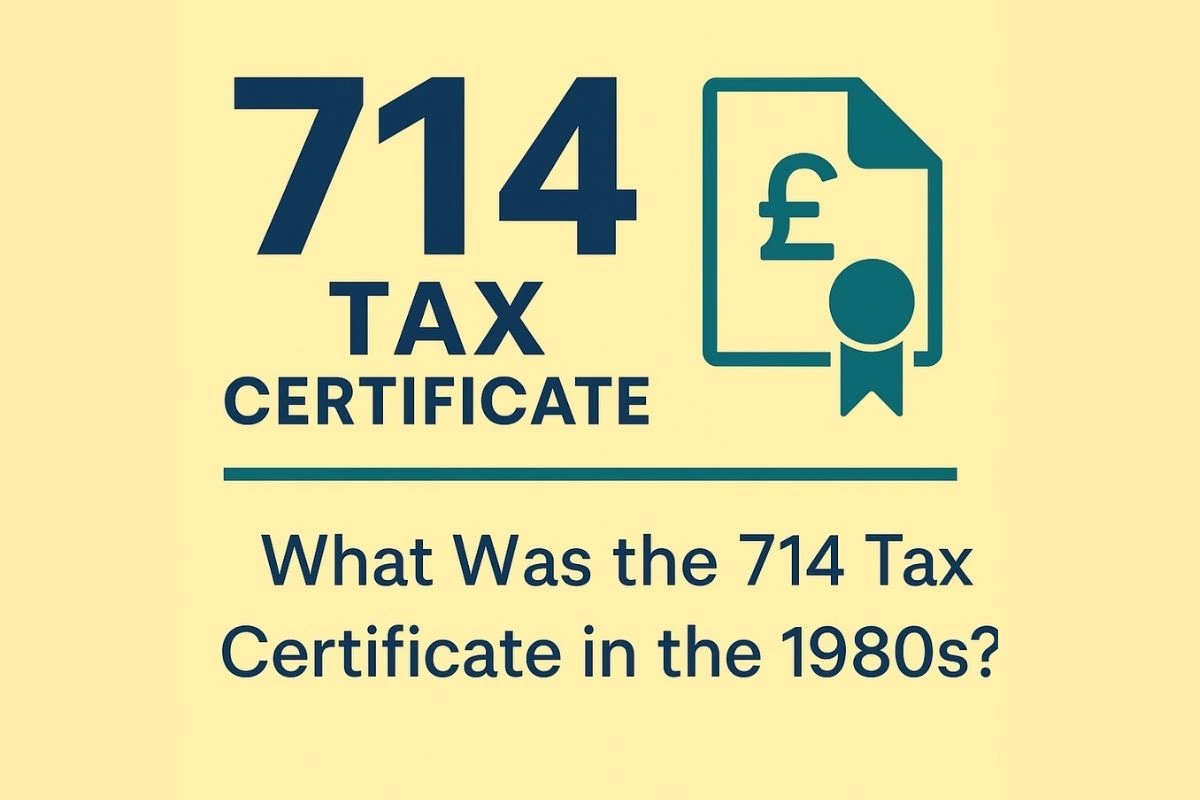In the UK’s construction industry during the 1980s, a small piece of paper quietly defined how thousands of workers got paid: the 714 tax certificate. If you were a subcontractor back then, you either had it and held more financial freedom or you didn’t, and watched deductions shrink your pay before it ever hit your hands.
But what exactly was the 714 certificate? And why did it matter so much?
Let’s break it down simply without the jargon or the fluff.
What Was the 714 Certificate?
The 714 certificate was part of the UK’s Construction Industry Scheme (CIS). It allowed subcontractors to receive gross payments meaning, no tax was deducted at source by the contractor.
In contrast, most subcontractors had tax automatically taken from their pay. If you had a 714, you kept the full payment upfront and handled your own tax returns later.
It was introduced as a way to give trusted, established subcontractors more control over their finances. But it wasn’t given to just anyone.
The line between genuine subcontractors and abuse of self-employed status was often blurred.
Who Qualified for It?
Getting a 714 wasn’t easy. You had to apply through the Inland Revenue (now HMRC), and you had to meet strict conditions.
Common requirements included:
- A proven record of tax compliance
- A registered business name
- Accurate records of payments and expenses
- No history of late filings or dodgy paperwork
Think of it like a badge of tax reliability. You were telling the government, “I’ve got this I’ll handle my taxes on my own.”
Why Did It Matter in the 1980s?
The 1980s were a wild time for labor in the UK. With a big rise in self-employment especially in construction—many workers found themselves navigating new rules, fewer benefits, and more paperwork.
Having a 714 certificate gave subcontractors:
- Cash flow freedom (no money held back)
- A sense of professional trust
- More control over how and when they paid their taxes
But it also came with more responsibility. If you didn’t manage your finances well, you could fall behind quickly.
714 vs SC60: What’s the Difference?
The SC60 form was what most subcontractors used. It showed how much tax was deducted by the contractor and passed to HMRC.
Main difference?
- SC60 = tax deducted at source
- 714 = gross payment, tax paid by subcontractor later
So, while SC60 offered a kind of forced discipline, the 714 was more for those who could handle their own finances and prove it.
To see how 714 and SC60 differed in practice, check out this SC60 vs self-employed comparison.
Abuse and the Crackdown
Here’s the twist: the system was often abused. Some contractors falsely claimed workers were self-employed just to avoid paying taxes or offering benefits.
The government noticed. By the late 1980s, pressure to tighten the system was growing. The result? Stricter checks, fewer 714 certificates issued, and eventually a full reform of the CIS by 1999.
Why It Still Matters Today
The 714 certificate might sound like a relic, but its story echoes today’s gig economy.
Modern freelancers and platform workers face similar issues:
- Tax confusion
- Lack of worker protections
- Pressure to prove they’re truly independent
Even today’s IR35 regulations are an attempt to deal with the same questions that surrounded 714: who’s really self-employed and who just looks like it on paper?
The 714 tax certificate gave workers freedom but also demanded responsibility. It rewarded those who played by the rules and punished those who didn’t.
It’s a perfect symbol of 1980s labor: a mix of independence, uncertainty, and fast-changing rules.
As we rethink work in the digital age, looking back at the 714 isn’t just about history it’s about understanding the foundations of today’s freelance economy.













